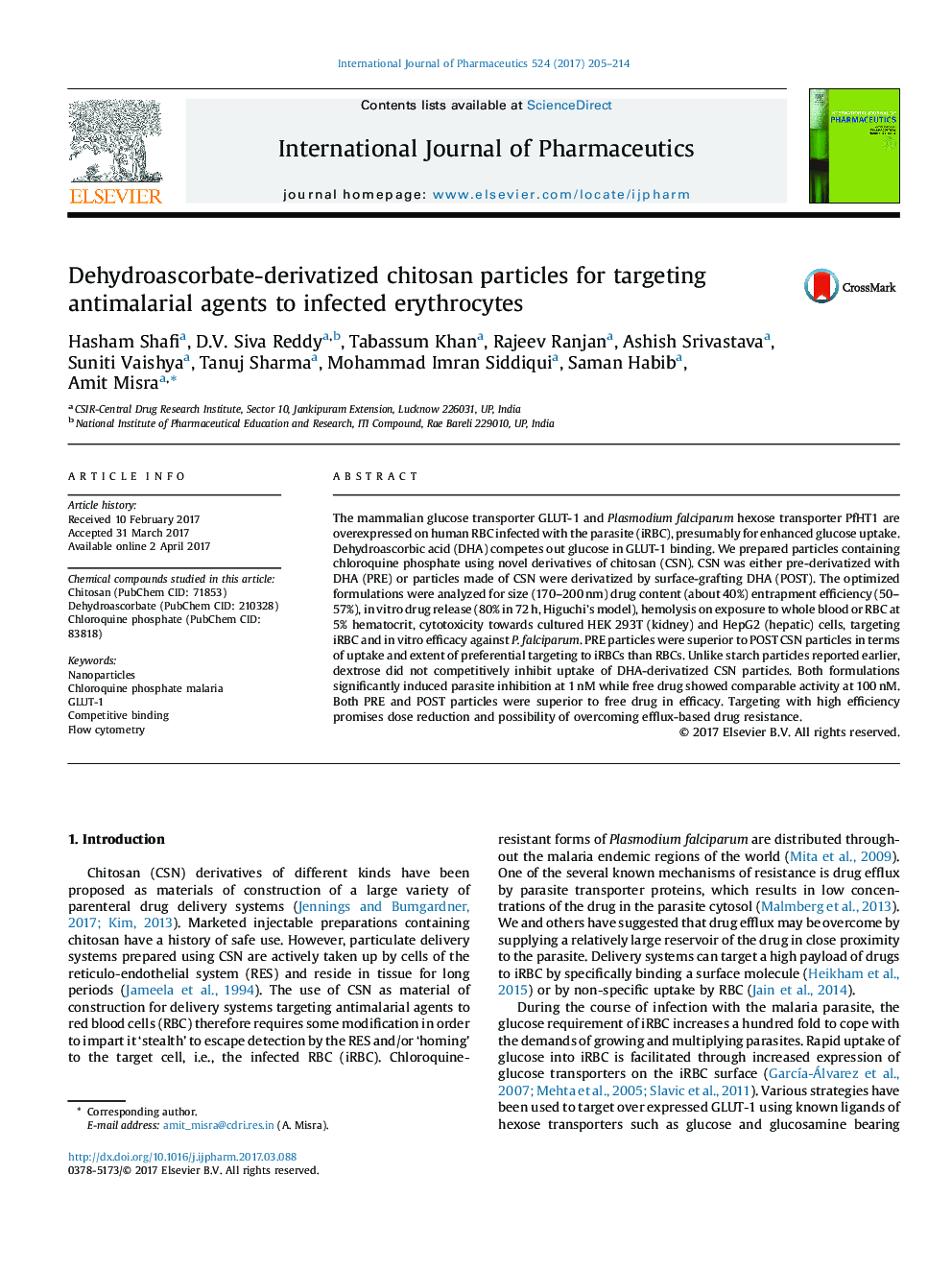| Article ID | Journal | Published Year | Pages | File Type |
|---|---|---|---|---|
| 5550472 | International Journal of Pharmaceutics | 2017 | 10 Pages |
The mammalian glucose transporter GLUT-1 and Plasmodium falciparum hexose transporter PfHT1 are overexpressed on human RBC infected with the parasite (iRBC), presumably for enhanced glucose uptake. Dehydroascorbic acid (DHA) competes out glucose in GLUT-1 binding. We prepared particles containing chloroquine phosphate using novel derivatives of chitosan (CSN). CSN was either pre-derivatized with DHA (PRE) or particles made of CSN were derivatized by surface-grafting DHA (POST). The optimized formulations were analyzed for size (170-200Â nm) drug content (about 40%) entrapment efficiency (50-57%), in vitro drug release (80% in 72Â h, Higuchi's model), hemolysis on exposure to whole blood or RBC at 5% hematocrit, cytotoxicity towards cultured HEK 293T (kidney) and HepG2 (hepatic) cells, targeting iRBC and in vitro efficacy against P. falciparum. PRE particles were superior to POST CSN particles in terms of uptake and extent of preferential targeting to iRBCs than RBCs. Unlike starch particles reported earlier, dextrose did not competitively inhibit uptake of DHA-derivatized CSN particles. Both formulations significantly induced parasite inhibition at 1Â nM while free drug showed comparable activity at 100Â nM. Both PRE and POST particles were superior to free drug in efficacy. Targeting with high efficiency promises dose reduction and possibility of overcoming efflux-based drug resistance.
Graphical abstractDownload high-res image (87KB)Download full-size image
